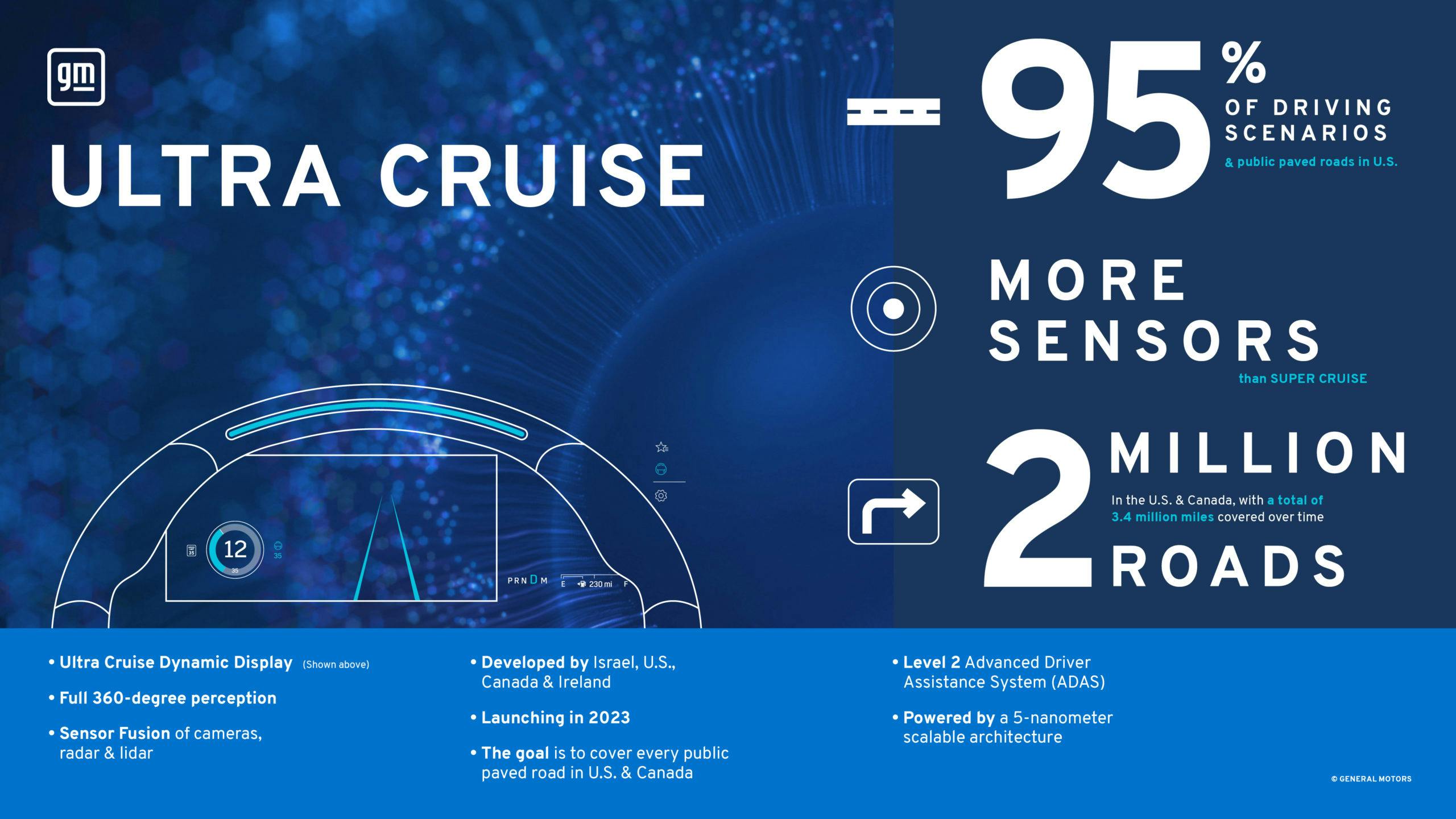General Motors has announced the next step up from its Super Cruise semi-autonomous driver assistance feature. Called Ultra Cruise, the new system has been designed to enable hands-free driving in 95 percent of scenarios and will be usable in most highways within the United States and Canada. This is the latest step in the company’s commitment to its goal of reducing crashes while cutting emissions and congestion.
At launch, Ultra Cruise will be available for use in over 2 million miles worth of roads with the U.S. and Canada. It will eventually grow to over 3.4 million miles, allowing drivers of General Motors vehicles to drive hands free on nearly every road. “Ultra Cruise is not just a game changer in terms of what it enables − a door-to-door hands-free driving experience − but a technological one as well,” said Doug Parks, Executive Vice President of Global Product Development, Purchasing and Supply Chain at General Motors. “It’s been developed completely in-house.”
GM won’t retire Super Cruise with the introduction of Ultra Cruise. Instead, it will use it to distinguish the difference between mainstream and premium or luxury products. Vehicles wearing luxury brands will get Ultra Cruise while Super Cruise will be on mainstream models. Parks added that making this distinction will allow GM to offer the best driver assistance features across all price points. GM will start adding Ultra Cruise to its vehicles in 2023 but will initially be limited to the Cadillac brand.
Ultra Cruise will be powered by a 5-nanometer, scalable computer architecture. It’s been futureproofed via the Ultifi software platform and GM’s Vehicle Intelligence platform. Over-the-air update capability will allow the system to gain new features over time. Building on Super Cruise, Ultra Cruise can follow internal navigation routes, react to permanent traffic control devices on the road, execute automatic lane changes and left or right turns, self-parking, and collision prevention. The system has a full 360-degree perception around the vehicle and has smart diagnostics capability that can tell when Ultra Cruise needs an upgrade. Information gathered by the system gets sent to GM’s data ecosystem to help with its continuous improvement.
The main components of Ultra Cruise are a set of cameras, radar, and LiDAR sensors. This helps it create 360-degree and three-dimensional representations of the vehicle’s surroundings while creating redundancies in key areas. Another LiDAR sensor is integrated behind the windshield to make sure the system is robust and accurate.
Like Super Cruise, Ultra Cruise actively communicates with the driver via a digital gauge cluster. This time, the system will also show you if it’s seeing the same thing as the driver. The display, called the Ultra Cruise Dynamic Display, is a free form unit directly in your line of sight. It will also use a camera facing the driver to make sure the driver’s eyes are on the road ahead so that he/she can take over when necessary. An accompanying app will also be available to provide key information when the vehicle is parked including driver’s statistics, trips, and history.
With Cadillac being the first GM brand to get Ultra Cruise, we suspect the Celestiq sedan will be one of the first vehicles to feature it. However, it could eventually find its way to more vehicles like the GMC Hummer EV and higher-end Chevrolet and Buick models.

